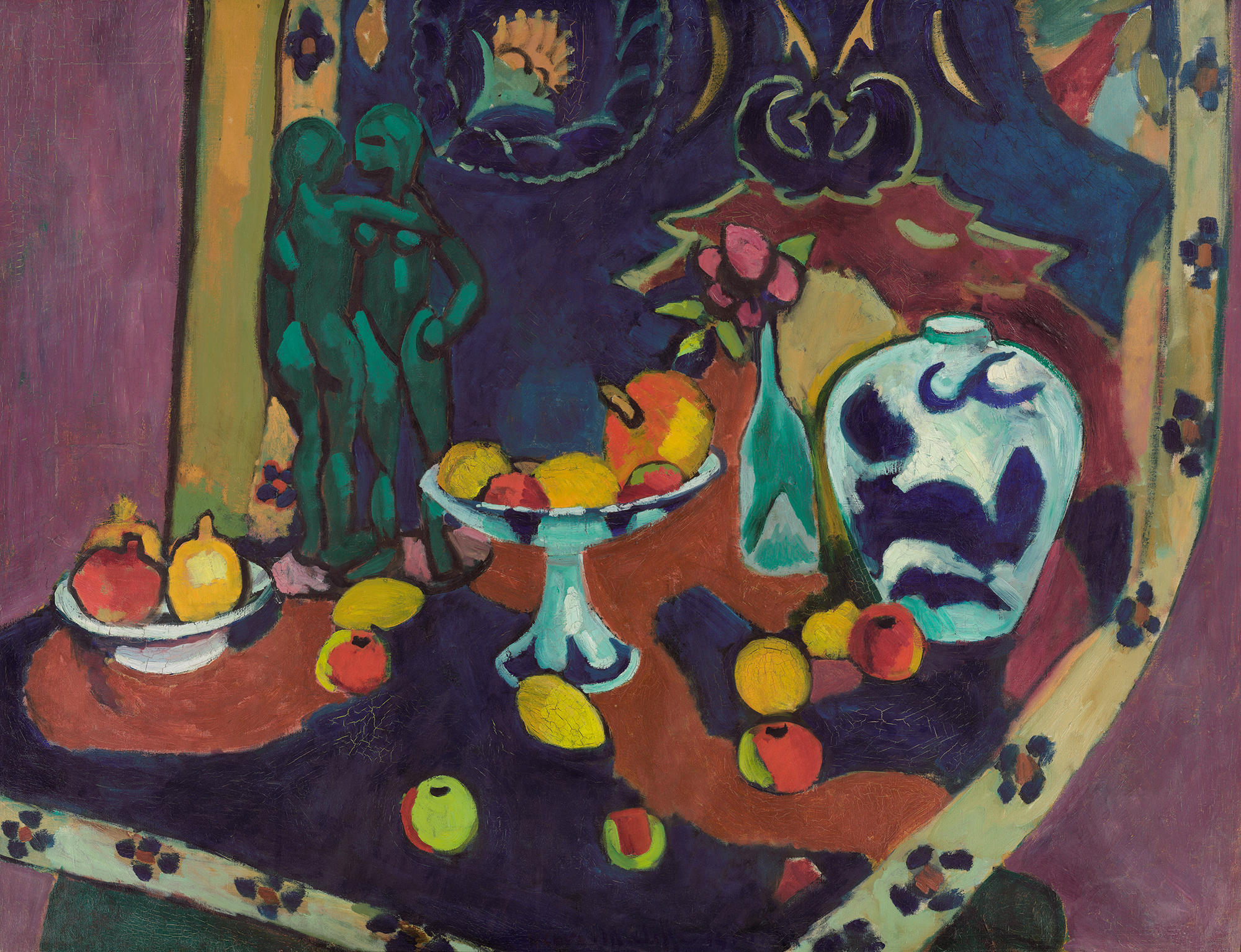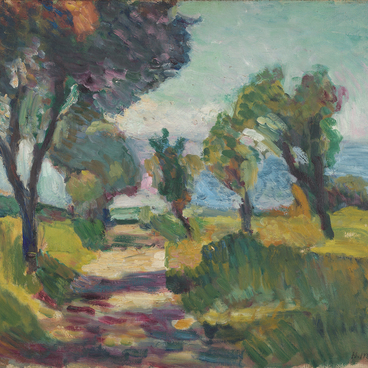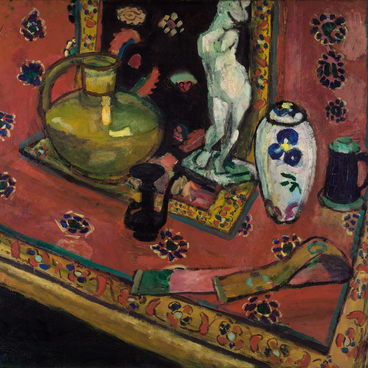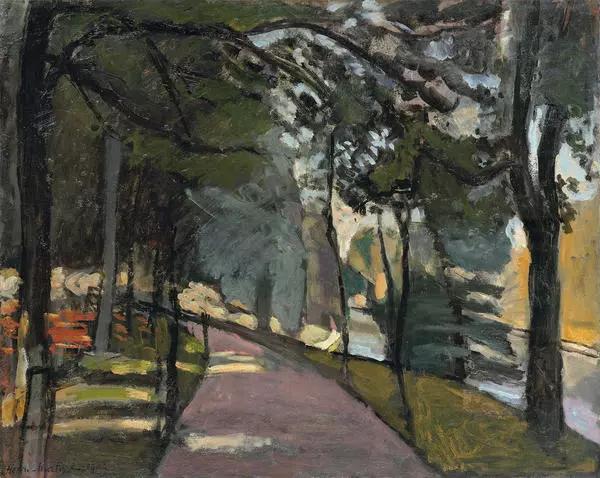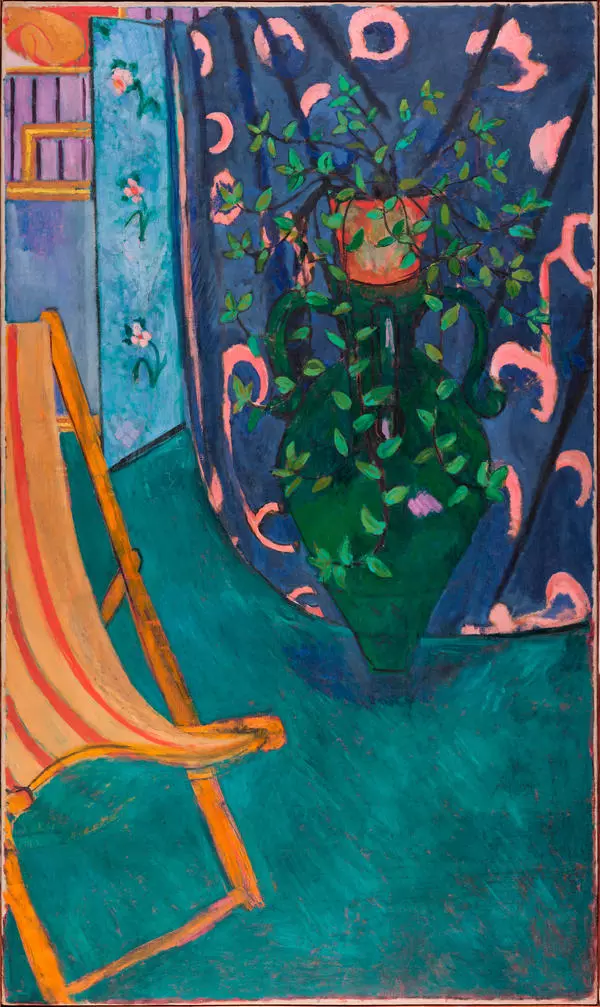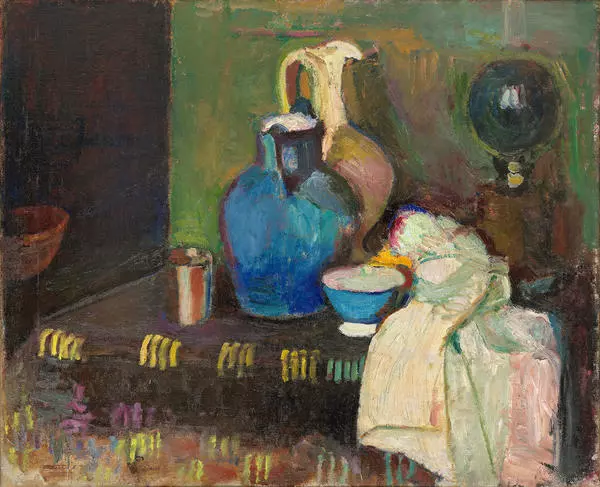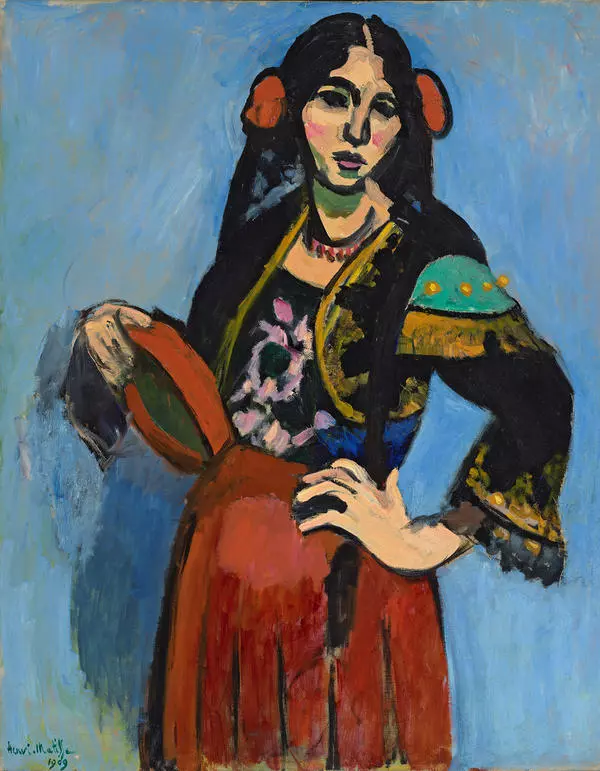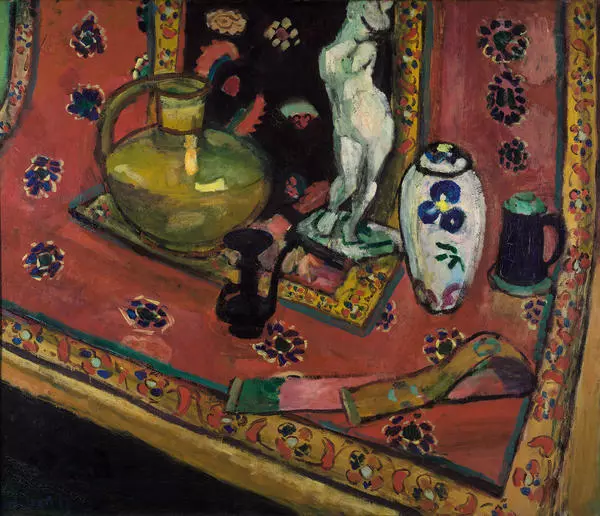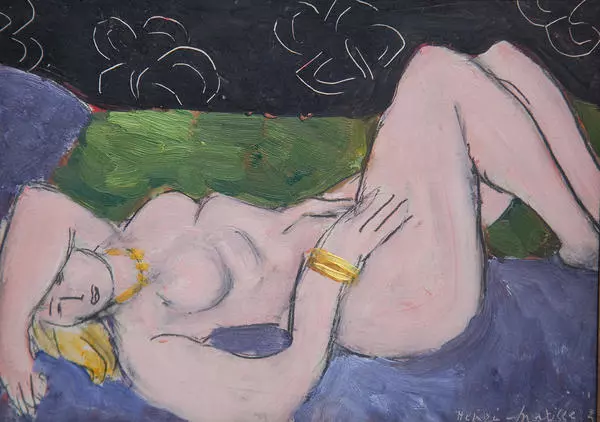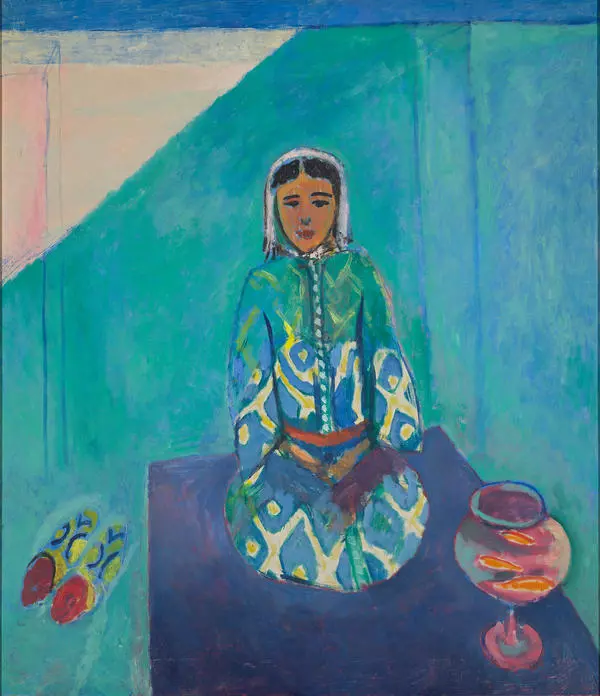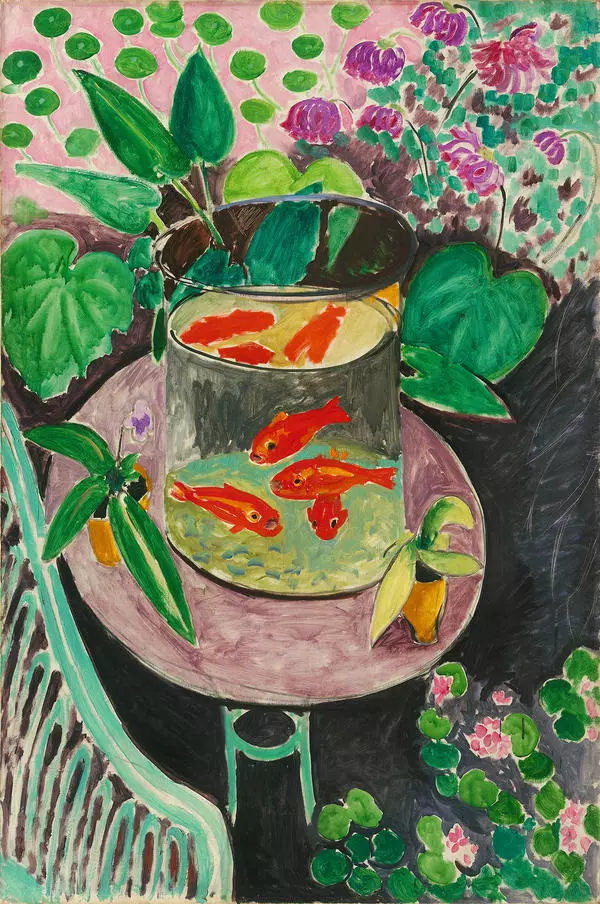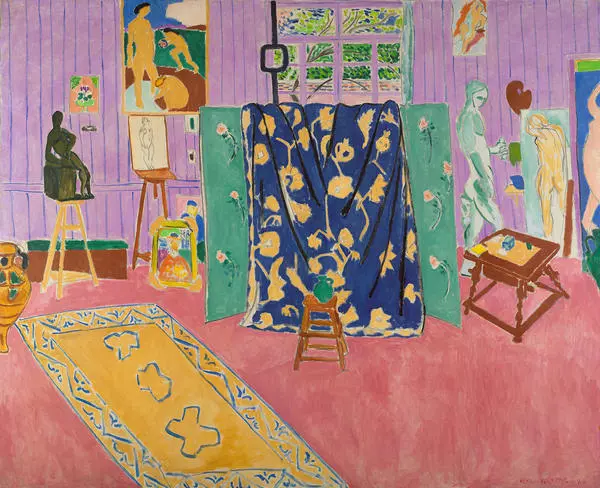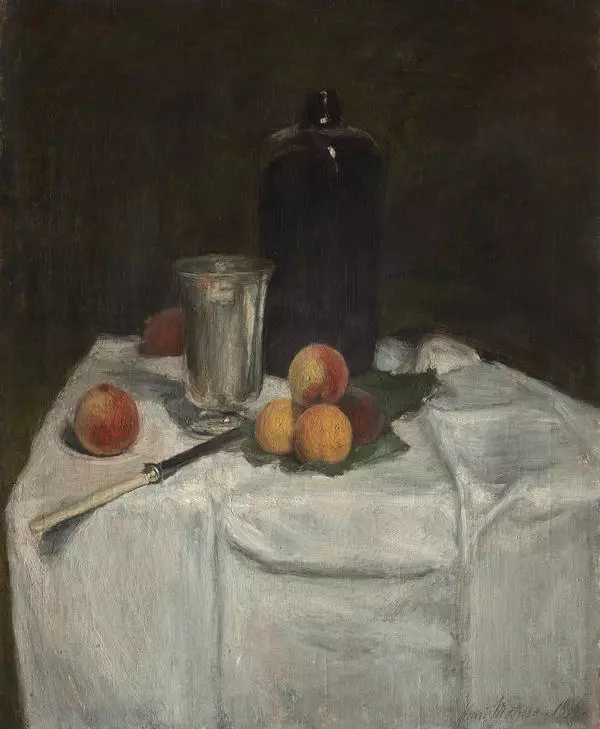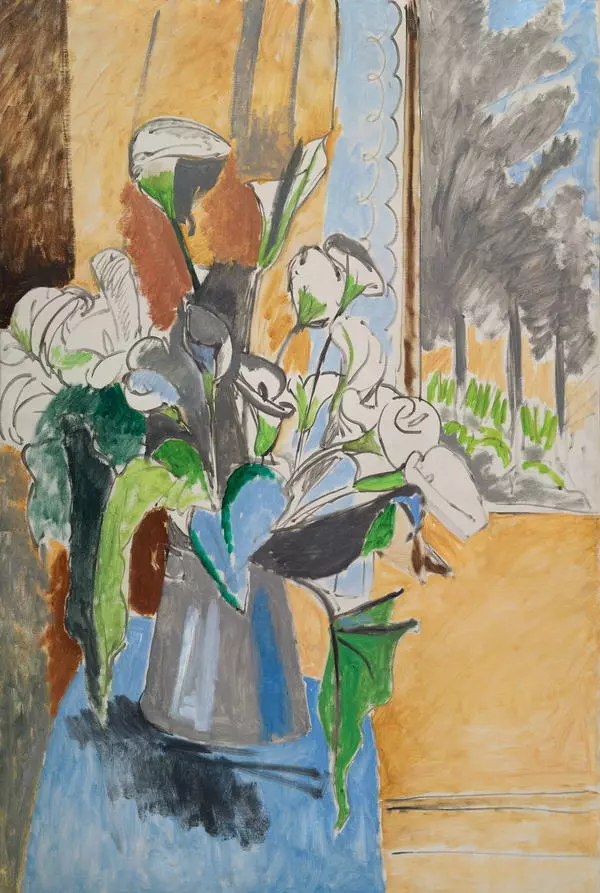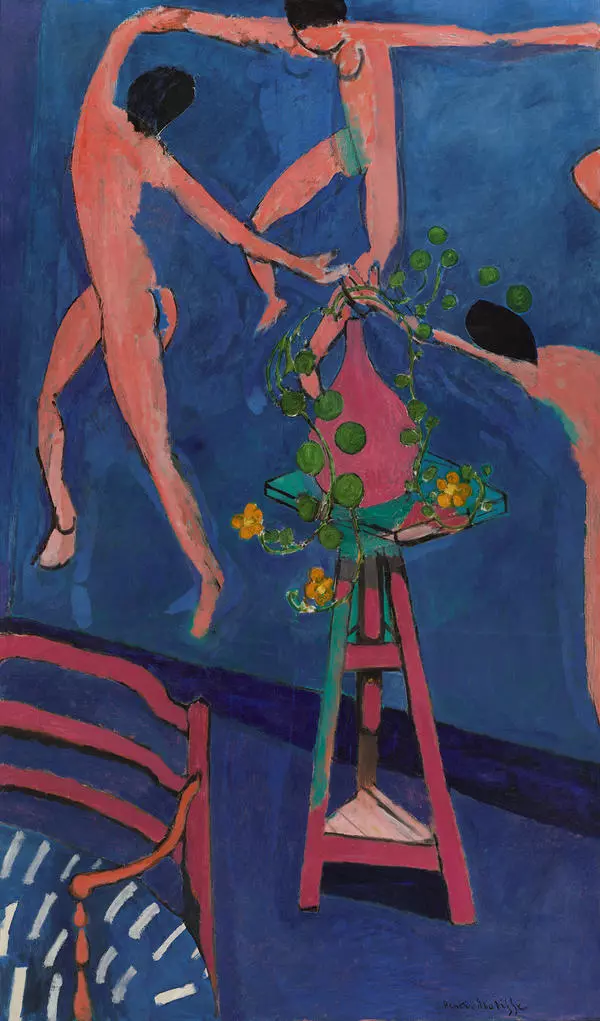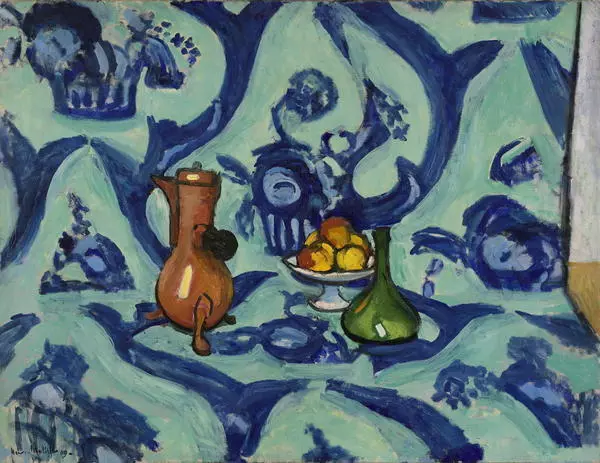In his still life Fruit and Bronze Matisse cleverly reduces his figurative arsenal to achieve expressiveness and decorative integrity. The artist backtracks from modeling three-dimensional objects, thus negating the perspective in the art work, and transforms it into a colorful precious panel. The patternwork in the carpet takes up almost the entire space on the canvas. The objects painted in the foreground – the vases, fruit, and the sculpture “Two Negresses” that Matisse made in 1908 – appear flat as they are incorporated into the “visual flow” of the composition. Matisse uses pure colors that gleam like a medieval enamel to convey his emotional experience with the motif in the painting. The line shapes the silhouettes of the objects, creating the ornamental rhythm. Lines and colors are key elements of Matisse’s figurative language. He uses them to achieve consistent tension in his art works, as well as spatial arrangement of the composition. Without disrupting the plane of the canvas, Matisse causes the viewers to perceive objects as closer simply by using variations of light and warm hues, while the objects in the distance are painted with colder and darker hues. At the same time, the lines tracing the shapes of objects help reveal the spatial relations between them. “Color and line are forces, and the interplay of these forces, the balance between them contain the secrets of creation, " Matisse wrote.
Fruit and Bronze
Creation period
1909-1910
Dimensions
90x118 cm
90х118
90х118
Technique
oil on canvas
Collection
Exhibition
8
Open in app#1
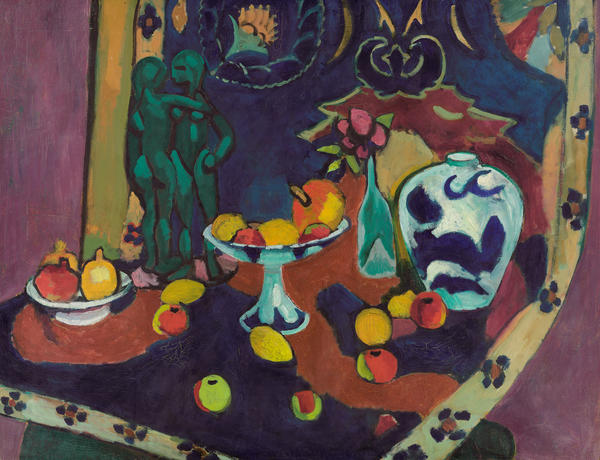
Henry Matisse
Fruit and Bronze
#2
read morehide
00:00
00:00
1x
Fruit and Bronze
Creation period
1909-1910
Dimensions
90x118 cm
90х118
90х118
Technique
oil on canvas
Collection
Exhibition
8
Open in app
Share
